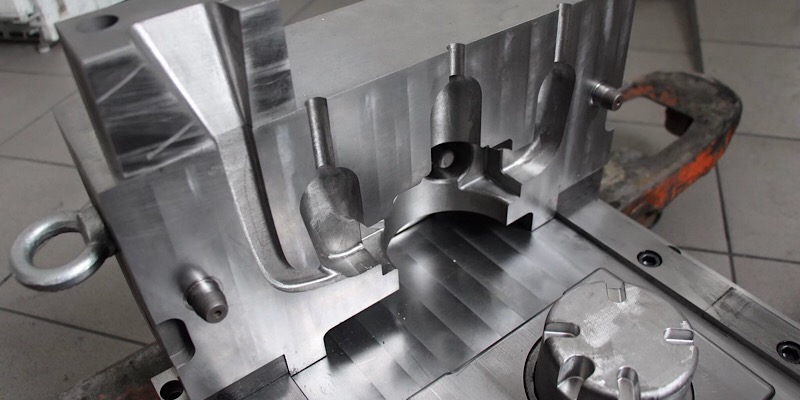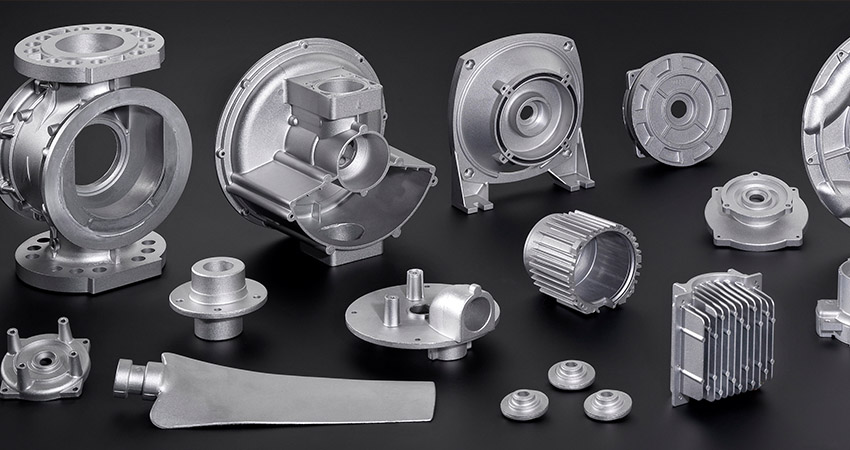Checking Out the Vital Applications and Use Light Weight Aluminum Factory in Modern Manufacturing
Light weight aluminum foundries play a necessary function in modern-day manufacturing, serving varied markets with their unique homes. From automotive components that improve gas efficiency to aerospace frameworks that prioritize weight, light weight aluminum's flexibility is noticeable. Its applications encompass building and construction and consumer electronic devices, highlighting its sturdiness and power effectiveness. Nonetheless, the developments in light weight aluminum casting techniques and future patterns necessitate a closer evaluation, as they may redefine its influence on manufacturing.
The Function of Aluminum Foundries in Automotive Manufacturing
As the vehicle sector progressively prioritizes lightweight products to boost gas efficiency and performance, light weight aluminum shops have actually come to be vital factors to manufacturing processes. These foundries focus on creating elements that satisfy the strict demands of modern cars, such as engine blocks, transmission housings, and structural elements. Light weight aluminum's positive properties-- such as high strength-to-weight ratio, rust resistance, and outstanding thermal conductivity-- make it a suitable selection for automobile applications.
Additionally, light weight aluminum foundries use innovative spreading methods, consisting of die spreading and sand casting, to create sturdy and detailed components. This capacity enables manufacturers to maximize styles for performance while decreasing weight. The use of aluminum additionally supports sustainability objectives, as it is extremely recyclable and reduces power intake in automobiles. By assisting in the integration of light weight aluminum into auto design, shops play a crucial function fit the future of the vehicle industry, promoting performance and development across the board.
Aerospace Applications: Lightweight Solutions for Flight
Light weight aluminum foundries play a substantial role in the aerospace market, where the need for lightweight products is paramount for improving gas efficiency and performance in aircraft. The one-of-a-kind residential or commercial properties of light weight aluminum, including its high strength-to-weight proportion and corrosion resistance, make it an excellent choice for different aerospace parts. These components include structural components, engine coverings, and landing gear, which add to general aircraft performance.
The usage of light weight aluminum alloys, particularly those created through advanced casting methods, permits the manufacturing of intricate designs and complicated shapes while lessening weight. In addition, light weight aluminum's recyclability straightens with the aerospace industry's sustainability objectives, reducing environmental impact. With continuous developments in aluminum factory technologies, makers can enhance production processes, resulting in enhanced effectiveness and reduced expenses. As the aerospace industry progressively prioritizes developments that enhance performance, light weight aluminum shops will certainly continue to be important to establishing lightweight solutions for modern flight.
Structure and Construction: Enhancing Architectural Honesty
In the structure and construction market, a substantial focus is put on improving structural honesty with the use of aluminum. Recognized for its high strength-to-weight ratio, aluminum gives durability without endangering on weight, which is essential in modern architectural layouts. Its resistance to rust further assures durability, making it an optimal material for numerous structural parts, including light beams, frameworks, and cladding.
Light weight aluminum likewise facilitates cutting-edge design opportunities, allowing engineers and engineers to create aesthetically pleasing frameworks while maintaining safety criteria. The material's adaptability enables its application in both property and commercial jobs, from high-rises to bridges. Additionally, improvements in light weight aluminum foundry methods have enhanced the accuracy of light weight aluminum components, ensuring they satisfy rigid building ordinance. In general, the assimilation of light weight aluminum in construction not only improves structural stability yet also contributes to sustainable building methods, provided its recyclability and energy-efficient manufacturing methods.
Consumer Electronics: The Increase of Light Weight Aluminum in Technology
In the domain name of customer electronic devices, aluminum has gotten importance because of its light-weight layout benefits and superior thermal conductivity. This change not just boosts item transportability yet also improves tool efficiency by effectively dissipating warmth. As modern technology remains to evolve, the role of light weight aluminum in developing reliable and streamlined gadgets is significantly considerable.
Lightweight Style Advantages
As customer electronics advance, the need for lightweight yet resilient materials has actually surged, making aluminum a progressively popular choice amongst producers. Its low thickness permits the production of smooth devices that are very easy to bring and use, significantly enhancing transportability. The strength-to-weight ratio of light weight aluminum assurances that products can hold up against day-to-day damage without compromising efficiency. Additionally, the pliability of aluminum allows manufacturers to design detailed shapes and types, further adding to innovative looks and performance. This light-weight quality additionally plays a vital role in energy performance, as lighter gadgets require less power to run. Therefore, light weight aluminum not just fulfills the advancing visual demands however additionally aligns with the contemporary focus on sustainability in customer electronic devices.
Thermal Conductivity Conveniences
Thermal conductivity is a crucial consider the efficiency of customer electronics, and aluminum excels in this domain name. Its high thermal conductivity permits effective warm dissipation, which is important for maintaining optimum operating temperatures in gadgets such as smart devices, laptops, and gaming consoles. from this source By promoting fast warm useful site move away from sensitive elements, light weight aluminum aids stop getting too hot, thereby improving efficiency and prolonging device longevity. The lightweight nature of light weight aluminum enhances its thermal buildings, making it an optimal selection for mobile innovation. As suppliers significantly focus on efficiency and power efficiency, aluminum's role in thermal administration ends up being even more substantial, bring about its growing fostering in modern-day electronic styles. This fad highlights aluminum's relevance in customer electronics development.
Marine Sector: Corrosion Resistance in Harsh Settings
Deterioration resistance is an important factor in the marine sector, where devices and structures are regularly revealed to extreme saltwater atmospheres. Light weight aluminum, particularly in its alloy types, provides substantial advantages hereof. Its natural oxide layer gives a protective barrier that stops corrosion, making it suitable for vessels, docks, and other aquatic applications.
Marine-grade aluminum alloys, such as 5083 and 6061, are particularly designed to hold up against the corrosive impacts of deep sea and weather. These alloys not just resist rust yet also preserve architectural integrity and stamina gradually. Applications range from hulls and superstructures of ships to elements in overseas systems.
The light-weight nature of aluminum additional improves its suitability, enabling boosted gas efficiency and simplicity of handling - Casting Foundry. As the aquatic market proceeds to concentrate on resilience and performance, light weight aluminum continues to be an essential material selection for standing up to deterioration in demanding marine settings
Innovations in Aluminum Spreading Techniques
While typical light weight aluminum spreading techniques have served the sector well, current innovations are transforming the landscape of light weight aluminum production. Strategies such as 3D printing of mold and mildews and cores are obtaining grip, enabling quick prototyping and lowered preparations. This innovation makes it possible for makers to produce complicated geometries that were previously challenging to achieve with conventional spreading techniques. Furthermore, developments in die-casting technology, including making use of high-pressure die-casting (HPDC), have actually improved the accuracy and surface area finish of cast light weight aluminum parts, causing improved efficiency in different applications.
Furthermore, the adoption of investment spreading has actually allowed for better design liberty and lowered product waste. Aluminum Casting. Advancements in alloy compositions are likewise considerable, as they enhance mechanical homes and deterioration resistance. Generally, these developments not just streamline production procedures however additionally contribute to even more lasting practices within the light weight aluminum foundry market, making it adaptable to the progressing needs of modern production
Future Fads in Aluminum Factory Manufacturing
The future of light weight aluminum shop manufacturing is positioned for considerable transformation through automation, enhancing efficiency and accuracy in making procedures. Sustainable practices are significantly ending up being a top priority, as shops look for to lessen their environmental impact while fulfilling expanding governing needs. Furthermore, developments in alloy development will certainly allow the creation of more powerful, lighter products customized for varied applications, driving technology in the market.
Automation in Foundry Processes

Sustainable Production Practices
An expanding emphasis on sustainable manufacturing techniques is improving the future of aluminum foundry manufacturing. Market leaders are increasingly adopting energy-efficient modern technologies and reusing efforts to minimize waste and lower carbon impacts. Making use of recycled aluminum significantly lowers power consumption contrasted to main aluminum manufacturing, making it a preferred selection for ecologically conscious manufacturers. On top of that, ingenious spreading methods are being developed to boost material performance and decrease exhausts. Business are also purchasing renewable power sources, such as solar and wind, to power their procedures sustainably. Aluminum Casting. By incorporating these techniques, the aluminum shop industry not just fulfills regulative needs but likewise replies to consumer demand for greener items, ultimately leading the way for a more sustainable manufacturing landscape
Advanced Alloy Growth
Improvements in light weight aluminum alloy development are set to play a substantial role in the future of factory manufacturing, specifically as sustainability and performance demands rise. The sector is increasingly concentrating on producing high-strength, light-weight alloys that can withstand extreme conditions while lessening ecological influence. Scientists are exploring innovative structures, such as aluminum-lithium and aluminum-scandium alloys, which guarantee improved mechanical homes and lowered weight. Additionally, the integration of advanced manufacturing techniques, including additive manufacturing and precision spreading, enables even more complex geometries and reduced material waste. As regulatory pressures and customer choices change in the direction of greener options, the advancement of recyclable and energy-efficient alloys will be essential. The future landscape of aluminum shop production rests on these developments in alloy modern technology.

Often Asked Concerns
What Are the Environmental Effects of Aluminum Shop Operations?
Light weight aluminum foundry operations can cause considerable environmental influences, including greenhouse gas discharges, power consumption, and waste generation. In addition, improper administration of toxins may cause soil and water contamination, impacting regional communities and neighborhoods.
Just How Does Aluminum Recycling Affect Factory Processes?
Light weight aluminum reusing enhances foundry procedures by providing an economical resources, decreasing energy usage and exhausts. This lasting practice enhances effectiveness, decreases waste, and supports the circular economic climate, benefiting both makers and the setting.
What Safety And Security Measures Are Executed in Aluminum Foundries?
Aluminum foundries execute different security procedures, including personal protective equipment, proper ventilation systems, normal safety training, fire avoidance methods, and tools upkeep procedures to reduce risks and guarantee a safe workplace for all staff members.
Exactly How Do Foundries Make Sure High Quality Control in Aluminum Spreading?
Shops ensure quality assurance in aluminum spreading with extensive material examinations, accurate temperature surveillance, standard procedures, and normal testing of cast products. These steps help keep consistency, reduce issues, and satisfy industry specifications effectively.
What Are the Cost Factors in Light Weight Aluminum Foundry Manufacturing?
Expense factors in light weight aluminum factory manufacturing include resources costs, power usage, labor prices, devices upkeep, and overhead expenses. Additionally, manufacturing quantity and complexity of layouts significantly affect overall production costs and earnings.
As the automotive sector increasingly focuses on light-weight materials to improve gas efficiency and efficiency, light weight aluminum factories have actually come to be vital factors to manufacturing processes. Light weight aluminum shops play a considerable function in the aerospace field, where the demand for lightweight products is critical for boosting gas efficiency and performance in aircraft. Furthermore, innovations in aluminum foundry methods have actually boosted the accuracy of aluminum components, ensuring they meet strict structure codes. While typical light weight aluminum spreading approaches have actually offered the industry well, recent developments are transforming the landscape of aluminum manufacturing. The use of recycled aluminum considerably reduces energy consumption compared to main aluminum production, making it a preferred choice for environmentally conscious manufacturers.